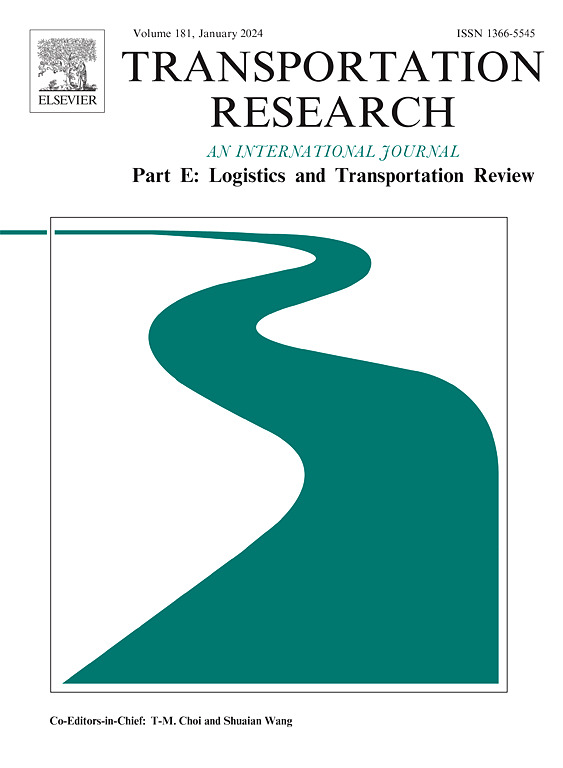An interpretable machine learning framework for enhancing road transportation safety
IF 8.3
1区 工程技术
Q1 ECONOMICS
Transportation Research Part E-Logistics and Transportation Review
Pub Date : 2025-01-21
DOI:10.1016/j.tre.2025.103969
引用次数: 0
Abstract
This study presents a comprehensive decision-making framework that employs eXplainable Artificial Intelligence (XAI)-based methods to improve proactive road transport safety management, which is critical for global supply chain networks. The framework offers explainable predictions as well as suggestions pertaining to the near-future digitization of safety tools and their usage, customized for road transport safety management. We employed four black-box machine learning-based models—artificial neural network (ANN), support vector machine (SVM), random forest (RF), and extreme gradient boosting (XGBoost)—in this setting to enhance our comprehension of the crash-related risk factors that contribute to the severity of traffic accident injuries. Due to their opaqueness and complex inner workings, stakeholders often perceive these models as data-driven black-box approaches, making them incapable of providing an efficient decision-support tool. The recommended decision support incorporates agreement levels for predictions and interpretation across various XAI modeling paradigms. We deploy PFI (Permutation Feature Importance) and FIRM (Feature Importance Ranking Measures) tools to evaluate the extent of agreement in explainability between these various modeling approaches. The recommendations are based on PFI and FIRM values of highly performing models. We execute the framework as an illustration of the concept using a real crash dataset obtained from the NHTSA (National Highway Transportation Safety Administration of the United States) and report end-user feedback for use by transport policymakers.求助全文
约1分钟内获得全文
求助全文
来源期刊
CiteScore
16.20
自引率
16.00%
发文量
285
审稿时长
62 days
期刊介绍:
Transportation Research Part E: Logistics and Transportation Review is a reputable journal that publishes high-quality articles covering a wide range of topics in the field of logistics and transportation research. The journal welcomes submissions on various subjects, including transport economics, transport infrastructure and investment appraisal, evaluation of public policies related to transportation, empirical and analytical studies of logistics management practices and performance, logistics and operations models, and logistics and supply chain management.
Part E aims to provide informative and well-researched articles that contribute to the understanding and advancement of the field. The content of the journal is complementary to other prestigious journals in transportation research, such as Transportation Research Part A: Policy and Practice, Part B: Methodological, Part C: Emerging Technologies, Part D: Transport and Environment, and Part F: Traffic Psychology and Behaviour. Together, these journals form a comprehensive and cohesive reference for current research in transportation science.

 求助内容:
求助内容: 应助结果提醒方式:
应助结果提醒方式:


